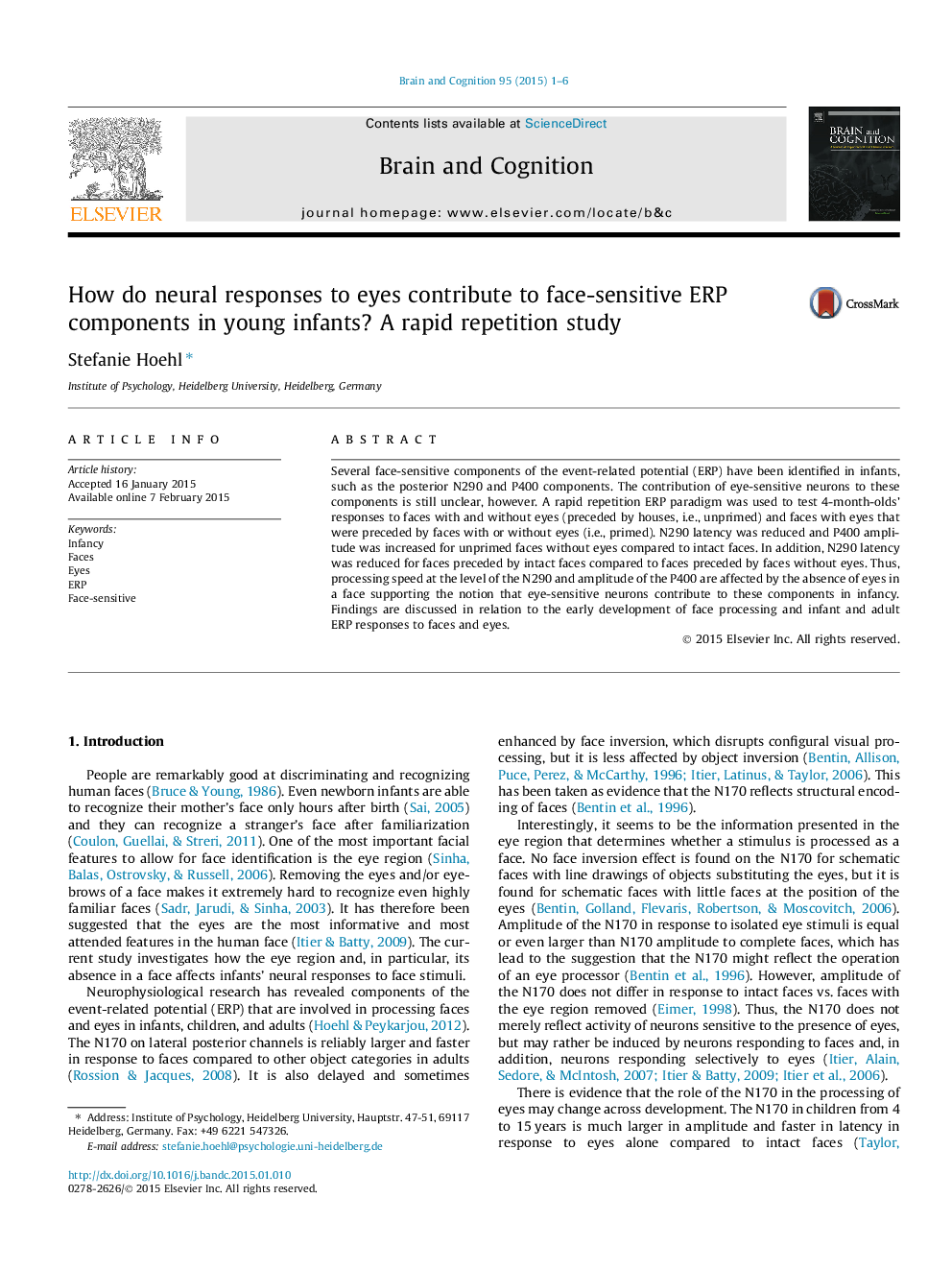| کد مقاله | کد نشریه | سال انتشار | مقاله انگلیسی | نسخه تمام متن |
|---|---|---|---|---|
| 924199 | 1473976 | 2015 | 6 صفحه PDF | دانلود رایگان |

Several face-sensitive components of the event-related potential (ERP) have been identified in infants, such as the posterior N290 and P400 components. The contribution of eye-sensitive neurons to these components is still unclear, however. A rapid repetition ERP paradigm was used to test 4-month-olds’ responses to faces with and without eyes (preceded by houses, i.e., unprimed) and faces with eyes that were preceded by faces with or without eyes (i.e., primed). N290 latency was reduced and P400 amplitude was increased for unprimed faces without eyes compared to intact faces. In addition, N290 latency was reduced for faces preceded by intact faces compared to faces preceded by faces without eyes. Thus, processing speed at the level of the N290 and amplitude of the P400 are affected by the absence of eyes in a face supporting the notion that eye-sensitive neurons contribute to these components in infancy. Findings are discussed in relation to the early development of face processing and infant and adult ERP responses to faces and eyes.
Journal: Brain and Cognition - Volume 95, April 2015, Pages 1–6